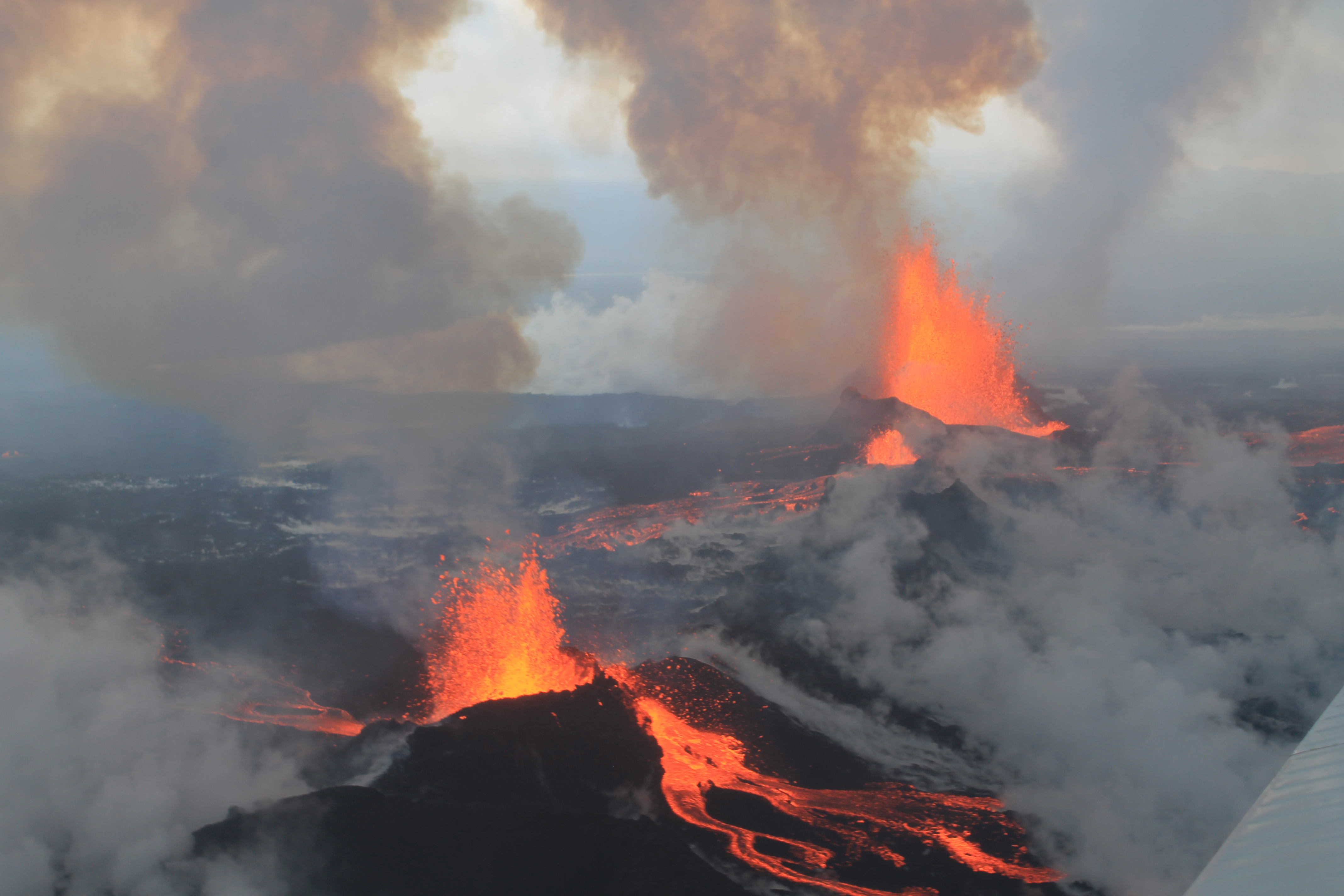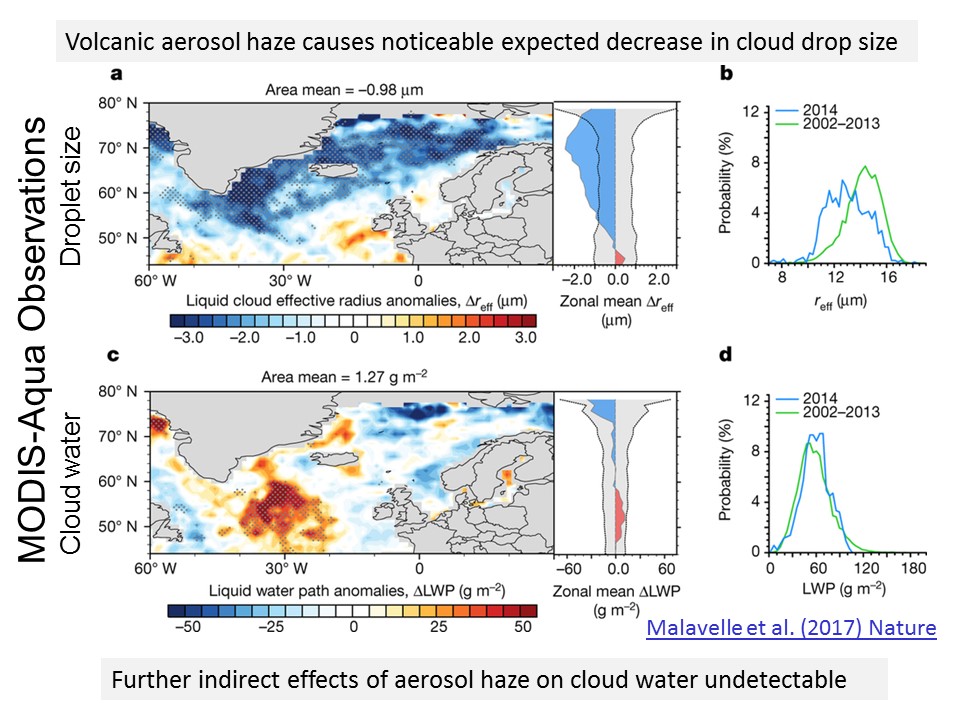A new publication in Nature, led by the University of Exeter and co-authored by NCEO and University of Reading’s Professor Richard Allan, showed that the massive 2014–2015 fissure eruption in Holuhraun, Iceland, reduced the size of liquid cloud droplets—consistent with expectations—but had no discernible effect on other cloud properties. This result will reduce uncertainties in future climate projections, since simulations producing excessive cloud liquid water amount response to tiny pollution particles may be discounted.

Pollution haze presents a serious health problem for many regions, particularly large cities. Yet tiny particles in the atmosphere, or aerosol, also influence our climate through a “parasol effect” which shades the surface from incoming sunlight. Increased aerosol pollution has contributed a cooling influence on climate, without which the planet would have warmed even more than it has done in response to rising greenhouse gas concentrations, also the product of human activities.
Quantifying the size of this cooling effect is a great challenge due to the complex interactions of aerosol particles with sunlight, particularly through indirect effects that make clouds reflect more sunlight back to space. Understanding and reproducing the correct aerosol-cloud effects in simulations is crucial for our ability to project future climate change as well as interpreting historical warming of climate.
The research, published in Nature on 22 June, used a novel approach to investigate how aerosol cools climate. The full journal article can be read here. In September and October 2014 a massive volcanic fissure eruption in Holuhraun, Iceland (Figure 1 above) continually injected vast quantities of sulfur dioxide into the atmosphere at rates exceeding European industrial emissions. It effectively mimicked a sulfate aerosol pollution haze, being an ideal natural experiment to test simulations of the cloud-aerosol effects on climate. Using satellite data the aerosol haze can clearly be linked to smaller (more reflective) cloud droplets yet an effect on the amount of liquid water in the cloud could not discerned above the month to month fluctuations in weather patterns.
Figure 2 below shows that the volcanic aerosol haze caused a decrease in cloud droplet size (top) but further indirect effects on cloud properties were undetectable (bottom) in the satellite data compared to the month to month fluctuations in weather patterns.
Figure 2:
